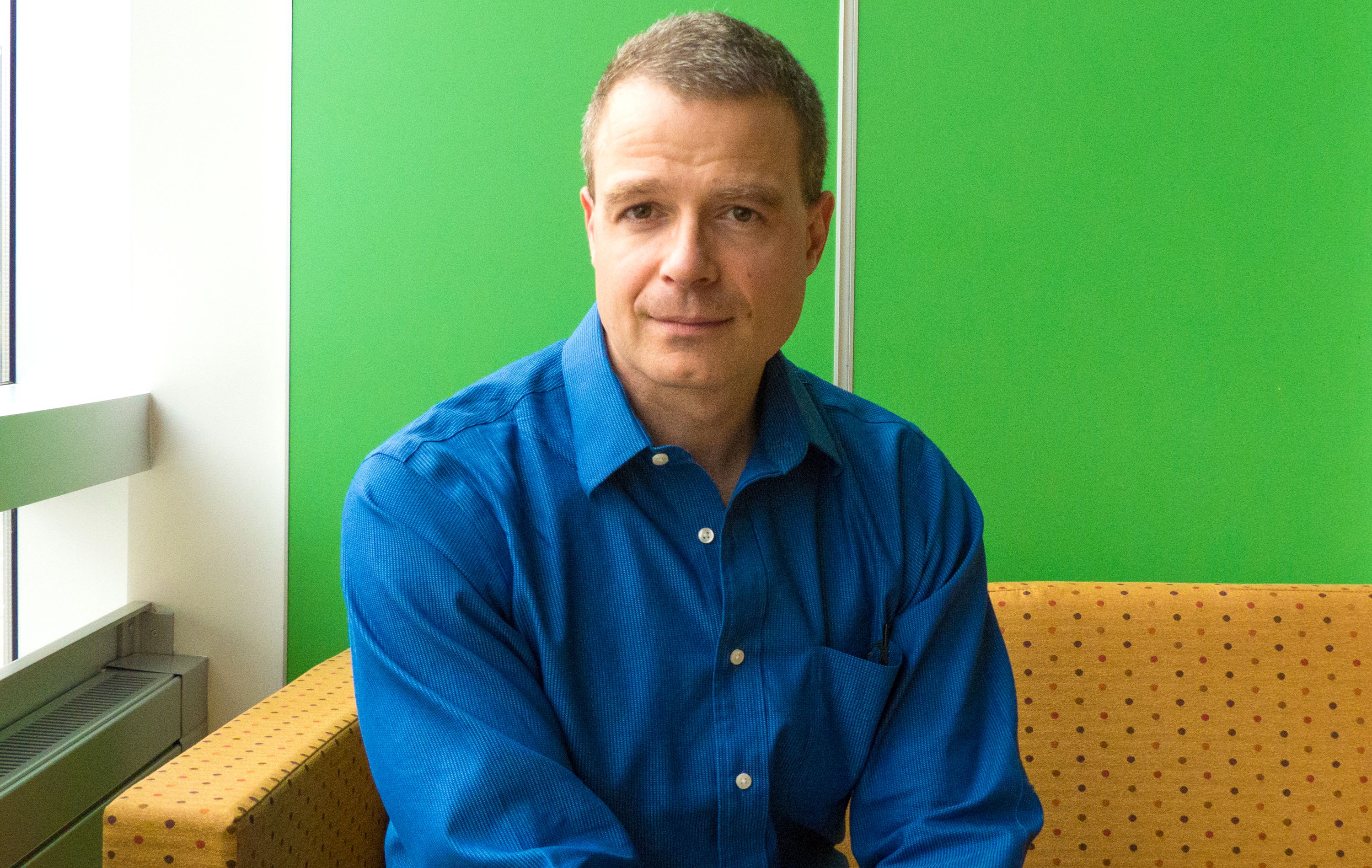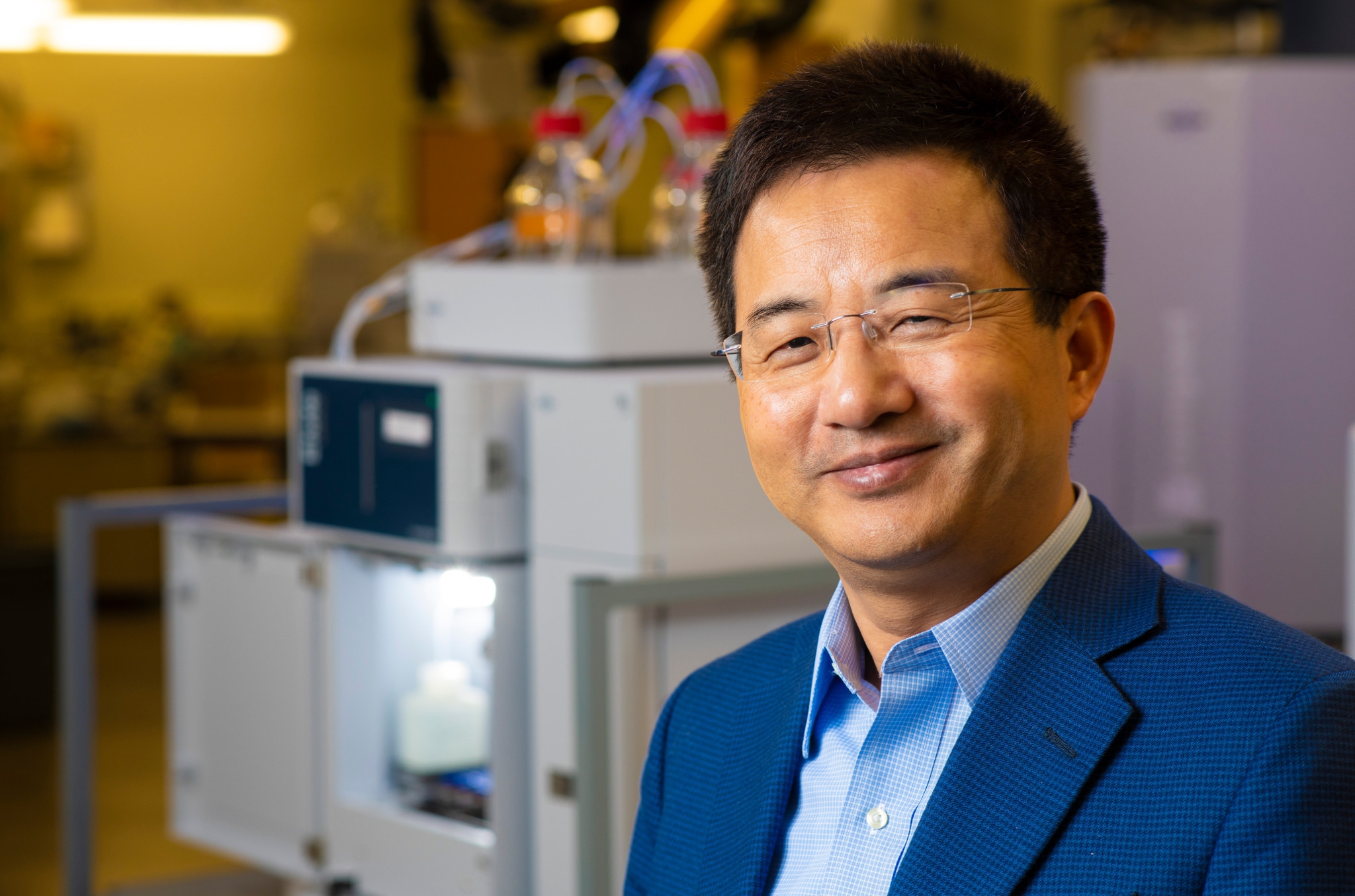Aiding researchers in pinpointing the environmental conditions for when an expectant mother goes into preterm labour is just one of the ways the federal government’s latest investment in a University of Alberta-led pan-Canadian metabolomics centre could change lives and save the health-care system millions.
The Canada Foundation for Innovation grant is providing $3.1 million of a $9.1-million equipment upgrade for The Metabolomics Innovation Centre (TMIC) with a newly formed Canadian Analytics Network for Outcome Prediction In Exposures (CANOPIE)—a collaborative project between the U of A, McGill University and the University of Calgary. The U of A will receive $2.6 million and McGill will receive $591,000.
Currently, eight per cent of pregnancies result in preterm birth, which, according to Matthew Hicks, a neonatologist in the Faculty of Medicine & Dentistry and co-lead on the grant, is the leading cause of infant death, neurodevelopmental and respiratory morbidity—cerebral palsy, bronchopulmonary dysplasia and other chronic lung diseases—and child disability.
He added that the estimated cost of preterm birth to the Canadian health-care system is more than $8 billion per year, excluding billions more in continuing care for those suffering lifelong disabilities.
“This infrastructure is not just creating a metabolomics profile of women who deliver early; it's about identifying who might benefit from intervention, and also whether there are potential therapies identified from the specific molecules we identify,” said Hicks, who is also a member of the Women and Children's Health Research Institute.
This national network of clinical and population health researchers will have the goal of studying relationships between exposures and specific health outcomes, and it will also develop sensitive, minimally invasive diagnostic tools relying on both conventional biosamples—saliva, blood, urine—and breath-based diagnostics.
“The driving hypothesis of CANOPIE is that through understanding links between exposures to toxins and health, we can improve the health of Canadians,” said Hicks.

Besides the work on preterm mothers and infants, some immediate projects by the group will include looking to improve the health of workers and older Canadians through studying the complex interplay of workplace exposures—particularly in the trades and industry—and characterizing external compounds and their metabolic byproducts to update metabolomic standard libraries.
The equipment—primarily the newest generation of mass spectrometers—will bring with it the ability for researchers to perform large-scale population-level sampling. That means analyzing 50,000 samples annually where the full metabolome is measured, and 200,000 samples when looking for defined substances.
“This will increase the number of samples we can process by at least 10 times,” said Liang Li, a chemistry professor in the Faculty of Science, co-director of TMIC and co-lead on the project. “There's a lot of genome sequencing technology out there that can analyze almost every genome quickly and is relatively inexpensive.
“We will do the same thing for the metabolome, the metabolites in our body. Moreover, we will use the body’s metabolome to monitor the health status of an individual.”
The infrastructure upgrades will also allow James Harynuk, co-applicant and TMIC node leader, and members of his lab in the Department of Chemistry to better explore the “exposome”—the accumulation of all the exposures experienced by an individual from conception and the impacts of those exposures on health.
“The new tools that we will be getting will allow us to perform more comprehensive characterizations of the chemical environment to which we are exposed as we go about our daily lives,” said Harynuk.

One project the infrastructure will support, also alongside Hicks, is looking at cannabis use by pregnant women and the developmental impacts it has on their infants.
Harynuk’s focus will be on probing changes in the metabolomes of moms and babies as well as other airborne exposures the moms experience during their normal daily activities. The hope is that this study will be able to help quantify risks associated with cannabis use during pregnancy.
“While there are other research facilities in the world that have some similar equipment to what we will have with this new investment, there are few, if any, that will have such a comprehensive suite of tools. It's going to be a unique-in-the-world facility.”
Li noted the U of A’s strength in metabolomics comes from early investment in the field, paired with the university's strengths in analytical chemistry, machine learning and artificial intelligence.
“The University of Alberta entered into the metabolomics field earlier than most other people,” said Li. “Everything is just right here, and putting them together just makes sense.”
The Metabolomics Innovation Centre, Canada’s national metabolomics laboratory spread across the U of A, University of Victoria, McGill, McMaster and U of C, was also recently successful in the midterm review with a six-year, $7.5-million CFI Major Science Initiatives Grant to support the operational side of this research.
All told, five U of A-led projects received $24.1 million in CFI funding, of which $19.3 million is coming to the U of A. The balance will go to project partner institutions across Canada. An additional eight projects led out of partner institutions secured $8.2 million in CFI funding for the U of A. Proposals for matching provincial funding for these projects are with the provinces pending results.
CFI funding for projects led by U of A
Dennis Hall, Vladimir Michaelis
ELEMENTS: Earth, Life, Energy and Materials with multi-Elements for Nano to Terrestrial Structures
$5.1 million from CFI for project worth $12.7 million
Frank Hegmann, Jacob Burgess (University of Manitoba)
Ultrafast Nanoscale Quantum Dynamics (UltraNanoQD) Innovation
$3.9 million from CFI with $3.7 million coming to the U of A and $234,000 to U of M for project worth $9.7 million
Matthew Hicks, Liang Li
Canadian Analytics Network for Outcome Prediction In Exposures (CANOPIE)
$3.1 million from CFI with $2.6 million to the U of A and $591,000 to McGill for project worth $9.1 million
Ian Mann
RADiation Impacts on Climate and Atmospheric Loss Satellite (RADICALS) Mission
$8.1 million in CFI funding, with $6.1 million coming to the U of A and $2 million to the University of Calgary for project worth $20.3 million
David Westaway, Michael Woodside
Protein Misfolding Scientific Exploration (ProMiSE) Team: Infrastructure Support for Remediation of Protein Misfolding
$3.9 million in CFI funding for project worth $9.6 million
CFI funding where U of A is partner institution
Michel Fich (Waterloo), U of A principal investigator: Erik Rosolowsky
CCAT-prime: A Submillimetre Wavelength Survey Telescope in Chile
$4.9 million in CFI funding of which $750,000 is coming to the U of A. The total cost of the project is $28.8 million.
David Blowes (Waterloo), U of A principal investigator: Nicholas Beier
Toward Environmentally Responsible Resource Extraction: Developing Innovative Technologies for Predicting and Remediating Environmental Contamination
$3.3 million in CFI funding of which $203,017 is coming to the U of A. The total cost of the project is $8.5 million.
Mark Boulay (Carleton), U of A principal investigator: Aksel Hallin
Development of Next Generation Liquid Argon Dark Matter Detector and of an Underground Argon Storage Facility at SNOLAB
$6.9 million in CFI funding of which $3 million is coming to the U of A. The total cost of the project is $22.6 million.
Anick Berard (Université de Montréal), U of A principal investigator: Padma Kaul
Canadian Mother-Child Cohort Active Surveillance Initiative (CAMCCO)
$1.2 million in CFI funding of which $331,979 is coming to the U of A. The total cost of the project is $8.5 million.
Monica Emelko (Waterloo), U of A principal investigator: David Olefeldt
Canadian Consortium for Drinking Water Security and Climate Change Adaptation
$3.5 million in CFI funding of which $474,117 is coming to the U of A. The total cost of the project is $9.3 million.
Gregg Adams (University of Saskatchewan), U of A principal investigator: Graham Plastow
Integrated genomics for sustainable animal agriculture and environmental stewardship (IntegrOmes)
$6.8 million in CFI funding of which $1 million is coming to the U of A. The total cost of the project is $15.9 million.
Bruce Gaulin (McMaster), U of A principal investigator: Larry Unsworth
Building a Future for Canadian Neutron Scattering
$14.3 million in CFI funding of which $400,000 is coming to the U of A. The total cost of the project is $47.3 million.
Paul Barclay (University of Calgary), U of A principal investigator: John Davis
A Quantum Diamond and Hybrid Photonics (QDHyP) Foundry
$5.2 million in CFI funding of which $2 million is coming to the U of A. The total cost of the project is $13.1 million.
Great ideas change the world, but ideas need a push forward. At the University of Alberta, we know that push has never been more important as we do our part to rebuild Alberta and keep doors of opportunity open to all. We're making research discoveries. We’re cultivating entrepreneurs. And we’re giving our students the knowledge and skills they need to turn today's ideas into tomorrow's innovations. Read more stories about U of A innovators.
